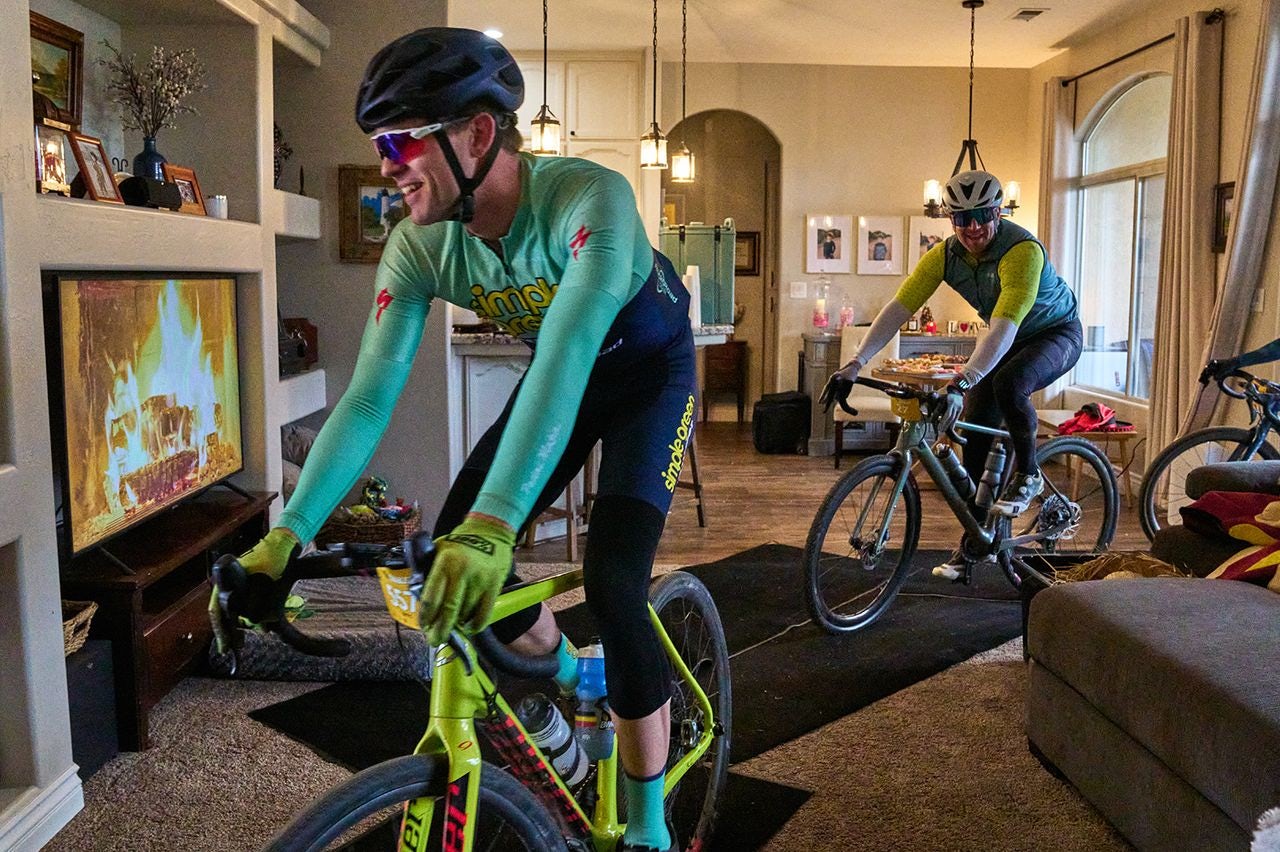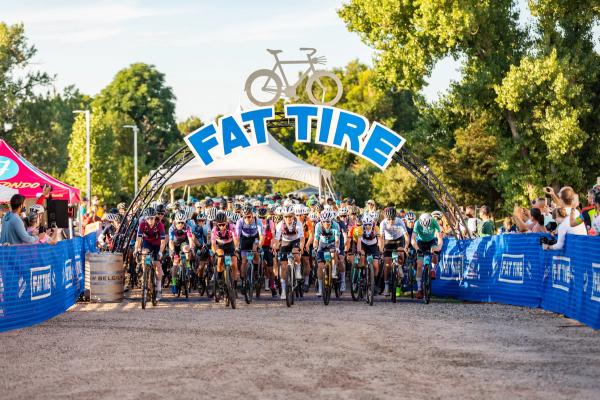8 hidden gems of US gravel racing in 2024
Beyond the big titles, here are eight gravel races we think stand out as underappreciated off-road events in the United States cycling calendar
Logan Jones-Wilkins
Junior Writer - North America
Courtesy of the Rockcobbler
One of the lesser-known US gravel events, the Rockcobbler, sees participants ride through someone's living room
For all the big events that capture the most attention in the US gravel racing scene, a hundred or so smaller gravel races provide equal opportunities for riders to test themselves against one another and the challenging terrain of US gravel.
These grassroots events are fantastic places to try a different kind of race in an unknown place, without the same hubbub of the events with the bigger profiles, like the races we profiled in our gravel top 10 list.
Read more: Top 10 must-do US gravel races in 2024
To highlight some of these more under-the-radar events, we put together a list of eight hidden gems of US gravel racing.
These events are spread out throughout the country and offer a chance to experience an event that is a little bit quirky, a smidge more intimate, but every bit as challenging as some of the bigger events in the US. We think you might enjoy some of the offerings on this list of lesser-known races.
The Rockcobbler
- Date: Februrary 10
- Location: Bakersfield, California
- Distances: 80-90 miles (8,500 feet of climbing), 40-50 miles and a limited capacity 130 mile course
- Registration (for full distance): $170, spaces available
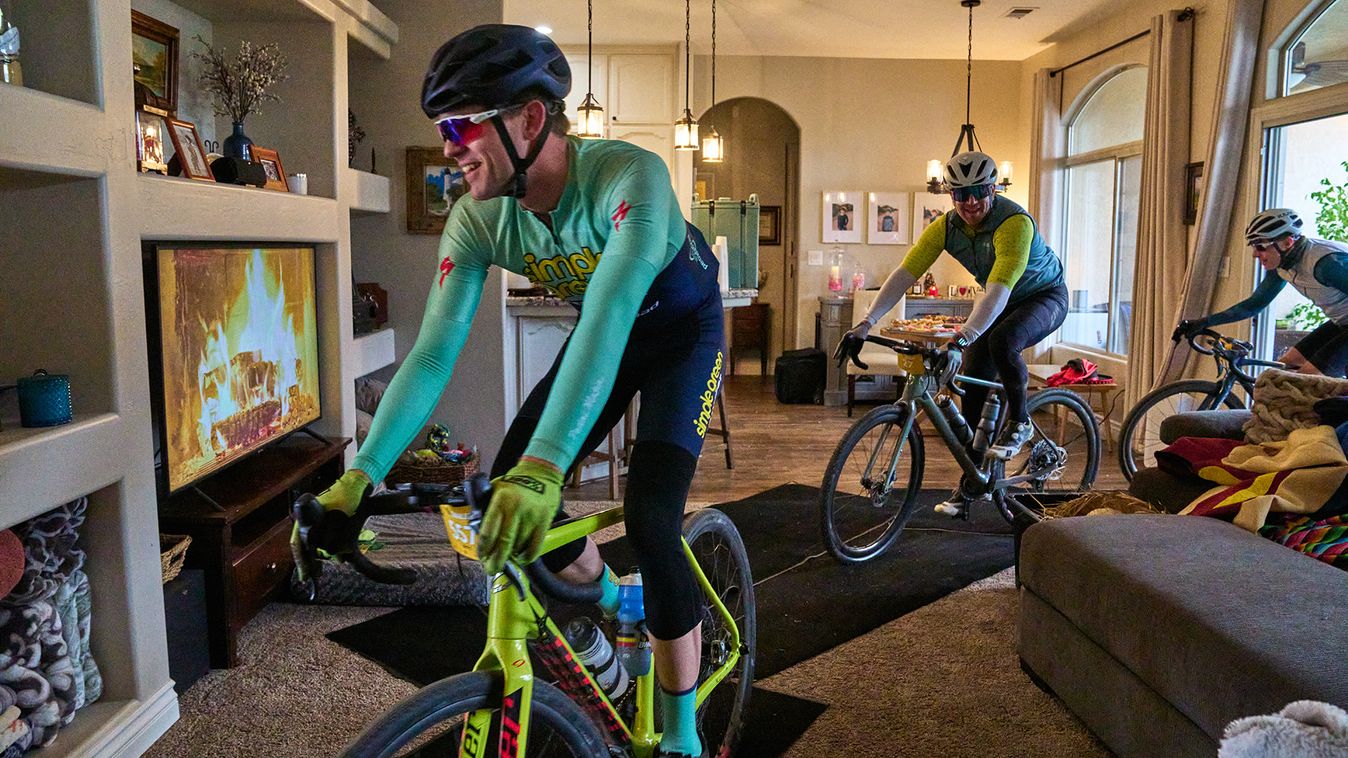
Courtesy of the Rockcobbler
A race through a living room? The Rockcobbler has it
Small gravel events are often akin to someone welcoming you into their home. At the Rockcobbler, someone actually does, with the race course running through a very gracious host's living room.
Yet, the race in Bakersfield, California is so much more than that one quirky element. Beyond the living room fly-by, riders should expect a fun-forward event that never takes itself too seriously. Led by race director Sam Ames, the self-described “Chief excitement officer and ringmaster of the shit show”, the event is “less of a race, and always an adventure and gravel-ish party”.
A fascinating aspect of the race, as is a common theme in gravel, is how the event ended up in its hometown of Bakersfield. The city, which is one of California’s gruffest working-class towns, is for many just a waypoint on the way to Los Angeles, Las Vegas or Phoenix.
Yet for a couple of months out of the year, with the wetter weather of the winter offering respite from the dry summers, Bakersfield springs to life and becomes undeniably beautiful for cycling in the rolling green hills of the area. That canvas makes for a delectable-looking course for riders from all over to take on. Furthermore, since growing in popularity, the race has begun attracting riders from the big Southern Californian cities. Given that the area doesn’t usually get much tourism, the event has been wholeheartedly embraced by the rural community, which gives it a fantastic community feel.
As for the racing? Expect a little of everything.
The majority of the race runs on two-track or singletrack trails through the foothills of the southern Sierras around Bakersfield. That terrain provides constant challenges with inconsistent surfaces, grass, sand and mud all in play. There are a couple sections of singletrack with a deceptively large amount of exposure which induce a level of thrill to the proceedings. Every year the course changes slightly, but it all generally visits similar territory, so the ratio of 80 miles to 8,500 feet of climbing is a good reference point to work from.

Courtesy of the Rockcobbler
One of the "cow trails" on the Rockcobbler course
Tech tip: The Rockcobbler is not a race to skimp on tread patterns. With ever-changing surfaces and moisture levels, you need some bite in the tyre department. We would recommend a solid 40 to 42mm tyre with a robust tread pattern.
Rouge Roubaix
- Date: March 9
- Location: Saint Francisville, Louisiana
- Distances: 93 miles (4,500 feet), 51 miles
- Registration: $125, spaces available
- Rouge Roubaix website
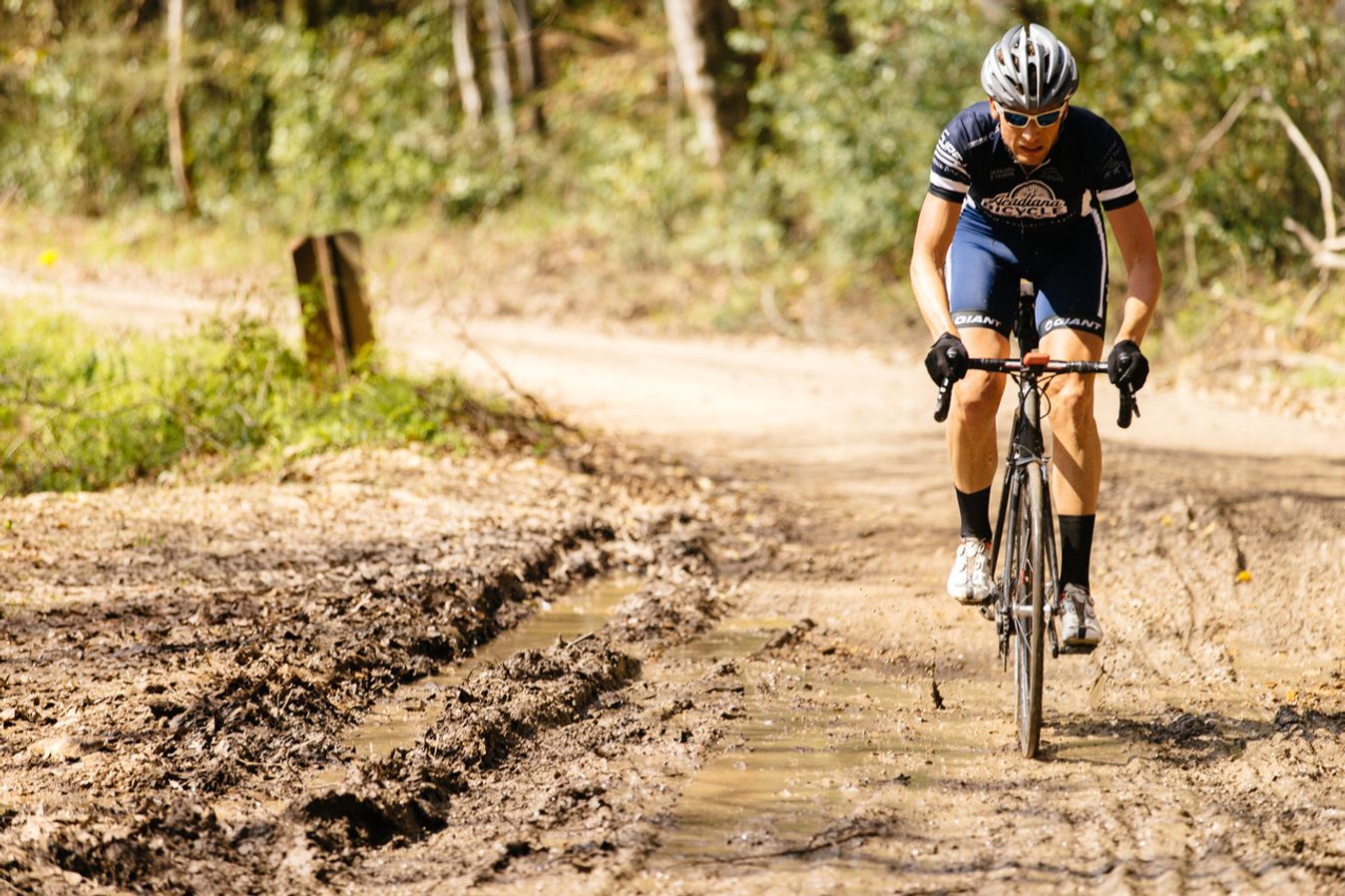
Courtesy of Rouge Roubaix
Yes, those are 25mm rim brake tyres on a rim brake road bike. The race was a gravel event back in 2015 when gravel looked a bit different
Louisiana might not be the first place one thinks of when talk turns to gravel, but down amongst the bluffs and bayous of the Mississippi River is a collection of small gravel roads that offer a fascinating playground for any gravel enthusiast. Deep in the backwoods around Saint Francisville, a hidden gem of American racing thrives: Rouge Roubaix.
Originally conceived in 1999, Rouge Roubaix is not a pure gravel race. In fact, it stood as a road race for a long time, even flirting with professional status and team cars at one point. Only after a short hiatus, which coincided with the gravel boom in the US, did the race fall in line with the discipline of gravel, even if the course did not change much. It has always been, most specifically, an ‘all-road’ race.
Nevertheless, in the case of Rouge Roubaix, all-road does mean all the roads: deep gravel, packed dirt, pavement that has deteriorated, pavement that will soon deteriorate, chip seal, one-lane tracks and the glossy black super smooth stuff. All of this is packed into a rambunctious 92-mile course with 4,500 feet of climbing. While that total is on the low end, almost all of it comes in fits of 10% or above, and on the dirt sections. Pair those elements together and you have a bonafide Spring Classic.
Beyond the surface, one of the big takeaways from the race is the breathtaking beauty of the South in full spring. Flowering bushes line the front of almost every house, and Spanish moss mixes with the budding leaves of the rich hardwood forests. Everything is alive in the most vibrant shade of green.
Some years, when the winter in Louisiana has been on the colder side, the race might take place before the season is in full swing, but with an increasingly early spring in the United States, it seems safe to say that the race will more likely than not be a chance to get your spring fix.
Tech tip: Rouge Roubaix is the type of race where bigger road tyres on an endurance road bike would be excellent. To be safe, 32mm or more of volume would be best, which fits on most modern road bikes. But if you are worried about clearance, a gravel bike with road tyres is always a more than sufficient option. Some riders will line up with 28mm tyres and we salute them for their courage, but this is probably not the most reliable or fast set-up given the rough inconsistent roads of Louisiana.
Read more: Road bike with gravel tyres vs gravel bike: what's the difference?
Appalachian Journey
- Date: April 6
- Location: Floyd, Virginia
- Distances: 100 miles (around 12,000 feet), 70 miles and 35 miles
- Registration: $105, spaces available
- The Appalachian Journey website
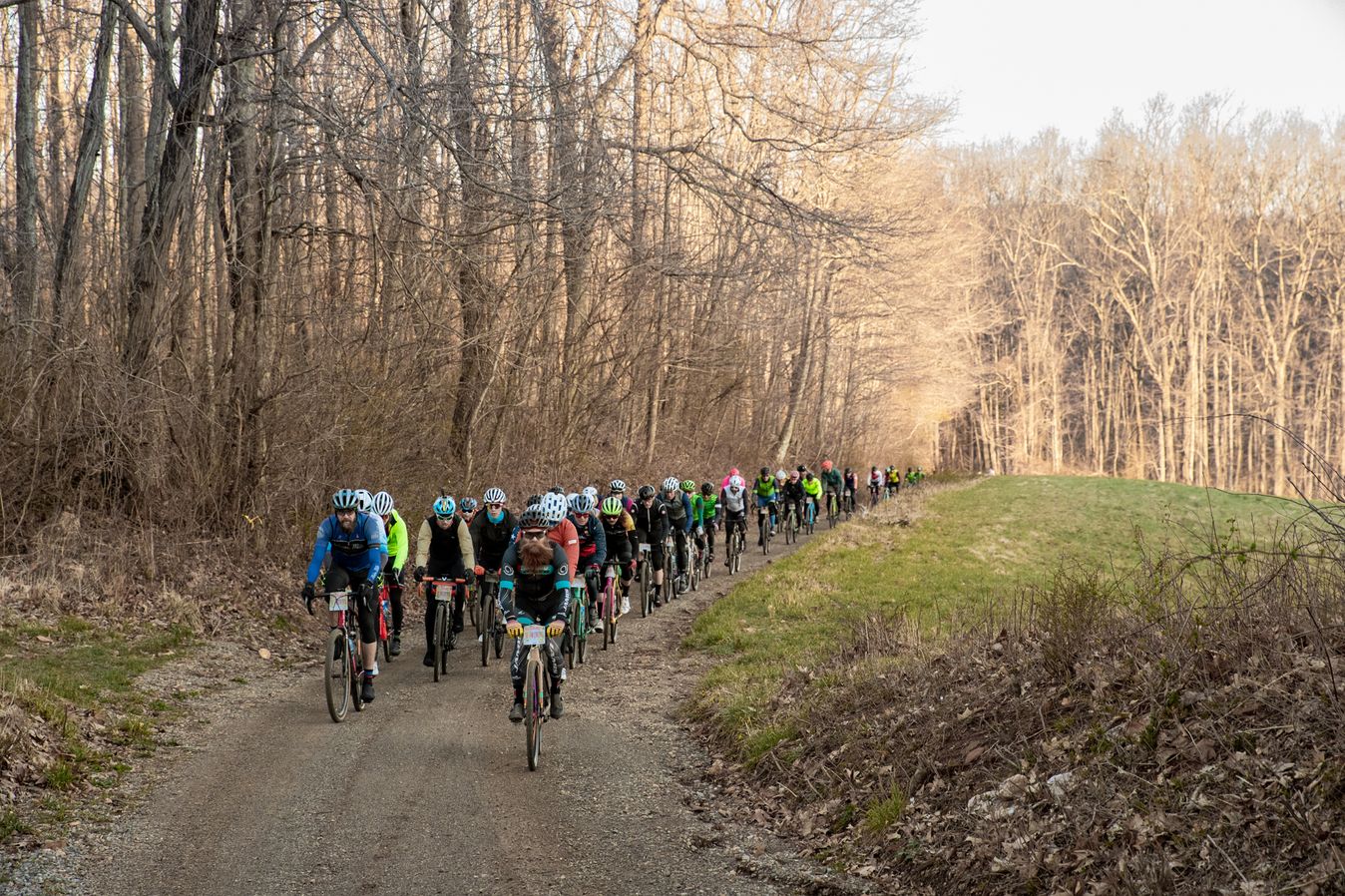
Courtesy of the Appalachian Journey
Two by two all the way down, as each racer has to stay close to their partner
One of the elements that is central to gravel is the individual nature of the sport. Every rider, from first to last, will have a moment where they have to battle against the course on their own, with only their thoughts and skills to keep them moving to the finish. One race, however, does not allow that. This is the Appalachian Journey in Floyd, Virginia which requires every participant to have a partner who they have to stay with for the entirety of the race.
It is a concept that race directors Gordon Wadsworth and Emily Hairsfield have lifted from their exploits in the world of duo mountain bike races and brought to the gravel roads around their home in the Appalachian Mountains of Virginia. Wadsworth, in particular, knows his way around a gravel event, as the Virginian has finished on the podium of Unbound.
With the race being all about companionship, the event places a huge emphasis on offering different options because the area is filled with extremely arduous riding. The longest option, the Long Doggie, is a beast of a test. The last two years have weighed in at 110 miles with 14,000 feet of climbing. While next year will see a new course, expect more of the same statistics. You cannot escape the difficulty in Virginia: challenges exist around every narrow, wooded corner of one of America’s great cycling states.
If that sounds like a challenge too far, fear not. The race also offers a 65-mile and 36-mile option, both with around 100 feet of climbing per mile. Regardless of your or your companion’s ability, there is a route for you!
Nevertheless, at the Journey, spirits and morale are sure to ebb and flow with the ups and downs of the terrain, so be sure to choose your partner carefully and come with a pocket full of patience. What goes around comes around.

Courtesy of the Appalachian Journey
What makes that finish line feeling even better? Making it a double!
Tech tip: Size those chainrings down if you have a chance. The road either goes up a steep gravel road, or down a steep gravel road. Sure, there might be a gradual paved downhill every now and then, but this race requires a lot of steep uphill pedalling and technical downhill riding. To get through it in the best way, a smaller chainring than normal is advised. Going down to a 40t would be best for most riders on a 1x setup, while 2x riders will want a 34t or less little ring.
Lost and Found Gravel Festival
- Date: June 15
- Location: Petola, California
- Distances: 100 miles (6,500 feet), 60 miles and 35 miles
- Registration: $225, spaces available
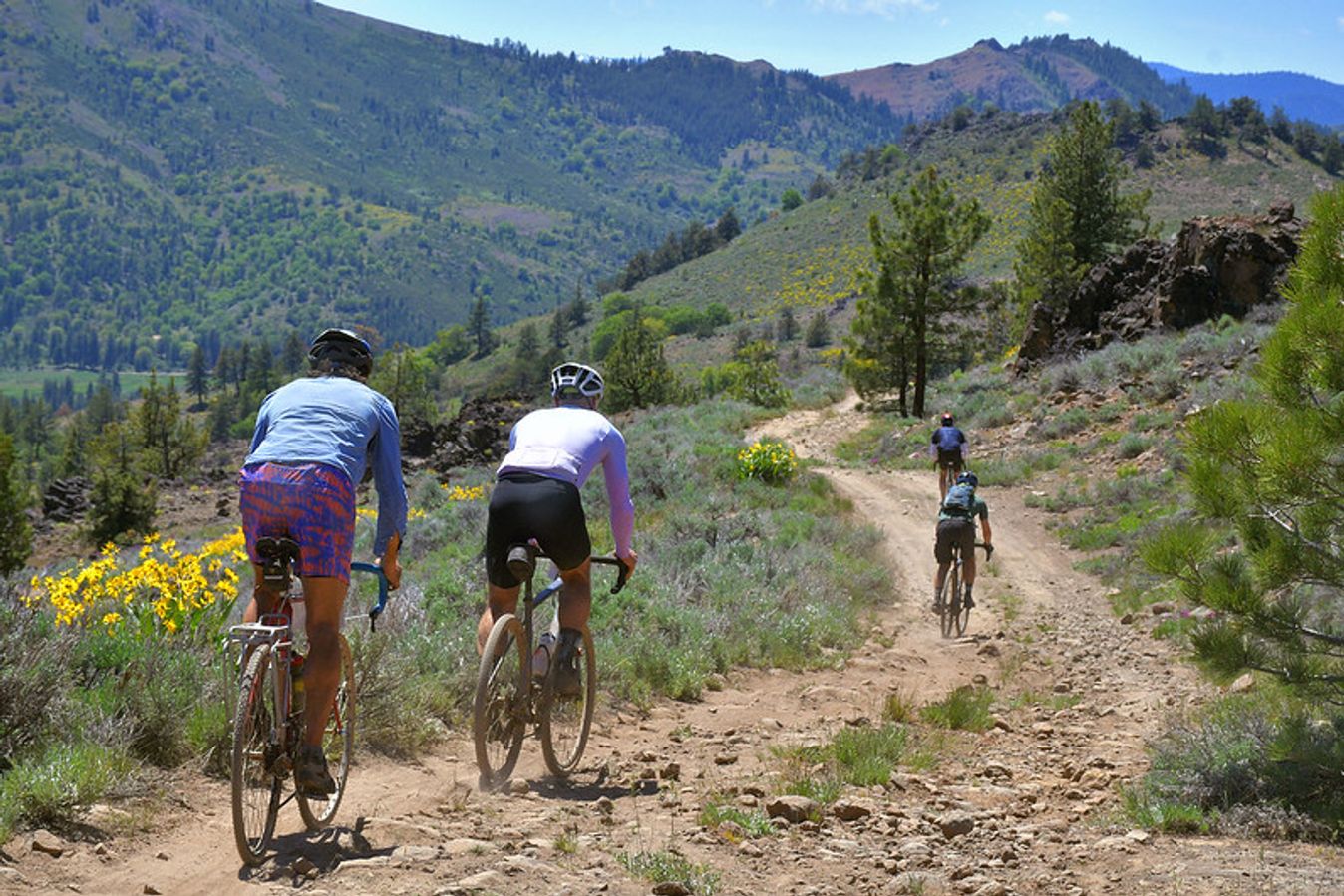
Courtesy of Lost and Found Gravel Festival
The chunkiness of the road surface at Lost and Found is one of the key elements of the event
The Lost and Found Gravel Festival in Northern California is a lost gem of legacy gravel races, joining races like the Mid South, Gravel Worlds and Unbound that have been around for over a decade. Races that were established ahead of the rest. Nevertheless, with a previous scheduling conflict with Unbound Gravel, Lost and Found has not been seen in the same light as those events, which is a shame because the event is every bit as exciting as those higher-profile races.
In an effort to elevate the race, and to bring some of the faster West Coast racers and enthusiasts back to a lesser-known portion of the Sierra Mountains, the race has changed dates to move two weeks back from the big show in Kansas. Now, with a new slot on the calendar, expect more people to find themselves lost in the mountains and forests of Portola, California.
The course itself is known for its extremely technical nature. With the long course coming in at 100 miles and 6,400 feet of climbing, Lost and Found is moderately hilly, but within those hills is a course that takes on some of the roughest roads in the world of gravel racing, with chunky rocks covering many parts of the route. It is rough and tumble racing and technical challenges that go to the limit of what a gravel road is, without venturing into the realm of singletrack.
Nevertheless, when the racing is done and dusted, the welcome party back to Portola is as grand as the vistas of the Sierras, with the promoters putting almost as much energy into the campout ethos as the race itself. Almost.

Courtesy of Lost and Found Gravel Festival
Life moves pretty fast. If you don’t stop and look around once in a while, you could miss it. Even in a gravel race
Lost and Found is – as most races were in the early days of US gravel – a work-hard, play-hard proposition, so be sure to enjoy all of that just as much as the ride itself.
Tech tip: Lost and Found is about as close to a mountain bike as a gravel race can get, so proper bike set-up is key. Our formal recommendation: go big, or go home. Lost and Found Gravel is an event where a bike like the new 3T Extrema is built for.
Read more: New 3T Extrema Italia blurs boundaries between gravel bike and mountain bike
FoCo Fondo
- Date: July 21
- Location: Fort Collins, Colorado
- Distances: 118 miles (7,500 feet), 53 miles, 32 miles and 12 miles
- Registration: $165, registration opens January 1

Courtesy of FoCo Fondo/Emily Sierra
From the plains to the mountains, FoCo Fondo has a sample of all Colorado has to offer
FoCo Fondo, unlike the name suggests, is a gravel race, and a great one at that.
While it is a participatory celebration of cycling, like other gran fondos, FoCo Fondo in Fort Collins, Colorado, is very much a grassroots gravel race built in the enthusiasm of the gravel wave that is sweeping through the North American cycling scene. With courses offering different distances and terrain that span two completely separate biomes, the race is a perfect introduction to the wild world of gravel racing.
The main event of the weekend is the ‘Triple Dog Dare You’ route which is a 118-mile challenge with around 7,000 feet of climbing. Foco Fondo also has 12, 32, and 53-mile options, however, those options forego most of the climbing of the 118-mile route.
While the race is in Colorado – a state famous for its heady altitude – the race stays on the ‘low’ end of the spectrum with most of the terrain bouncing around the 5,000-foot mark. Even though the high point hits 8,000 feet, it does not stay up high. The long, stair-step ascent through the canyons, aspen trees and pine forests of the main climb of the day is immediately followed by a dramatic plunge back to the low plains below, with a fast and rocky primitive dirt road taking the course back towards Fort Collins for the final 50km of the race.
With a course that mixes all these variables, FoCo Fondo is a glorious master of none. The race is not the longest, nor the hilliest. It is not the highest, nor is it the hottest. What the FoCo Fondo has in spades is the necessary mixture that uniquely suits the place the race operates from, all while offering a neat race weekend experience with all that Fort Collins has to offer right around the corner from the start.
We did a full review of the race in August, and it is still worth checking out. Click here to read the full breakdown.

Courtesy of FoCo Fondo/Brook Schimmels
A hot dog themed aid station awaits riders at mile 50, right in time for the huge climb up to 8,000 feet. Consume if you dare!
Tech tip: FoCo Fondo is a fast race that requires a fast set-up. 38mm with a light tread is a great tyre option for the race, as is a larger chainring if you can manage. There are some rowdier sections, but they are few and far between. In terms of chainrings, going too big would be a problem with a couple of steep sections, but if you can churn a big gear it will pay off on the long stretches of flats and downhills.
Vermont Overland
- Date: August 24
- Location: West Windsor, Vermont
- Distances: 55 miles (7,500 feet)
- Registration: $175, opens January 1
- The Vermont Overland website
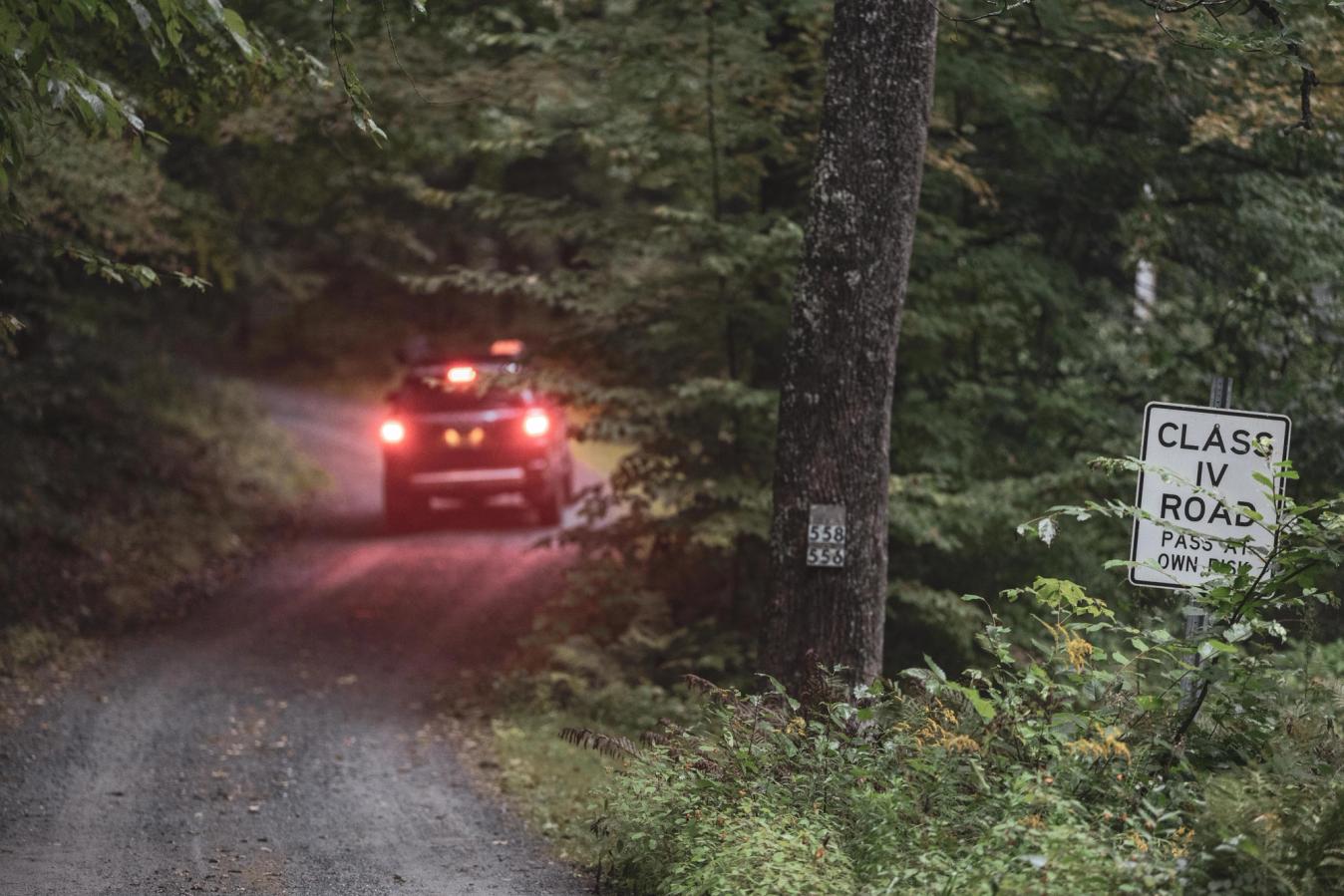
© Tom Dils
Class 4 roads are the gnarliest of all Vermont's gravel, with many having only two-tracks of dirt to distinguish the road from the forest
Vermont is, for six months out of the year, a gravel cyclist’s dream. With many of its roads sans tarmac, a gravel bike is the best vehicle to see much of the state’s raging rivers, lush forests and green mountain tops. Additionally, wherever you choose to roam in the state won’t be far from one of the rowdy Class 4 roads that give life to your inner explorer. They are, as the famous Vermont poet Robert Frost mused in one of his great works, the road less taken.
Yet, even if it is the divergent path in the woods, those tracks are home to one of the best underappreciated bike races in the country: the Vermont Overland.
In terms of gravel racing, the Vermont Overland is one of the shortest races with only one 55-mile course option. However, for the committed New England gravel contingent, it is second to none in terms of prestige, which comes from its intensity. Weighing in with 7,000 feet of climbing and eight Class 4 sections of chaotic off-road racing packed into that short distance, the race is a constant onslaught of ups and downs with a mix of smooth gravel and washed-out double track covering most of the route.
The race has remained true to its roots, so is limited to only 1,000 riders, with a family farm hosting the event’s start and finish in true Vermont fashion. It is a humble race, with a loyal following and a unique challenge.
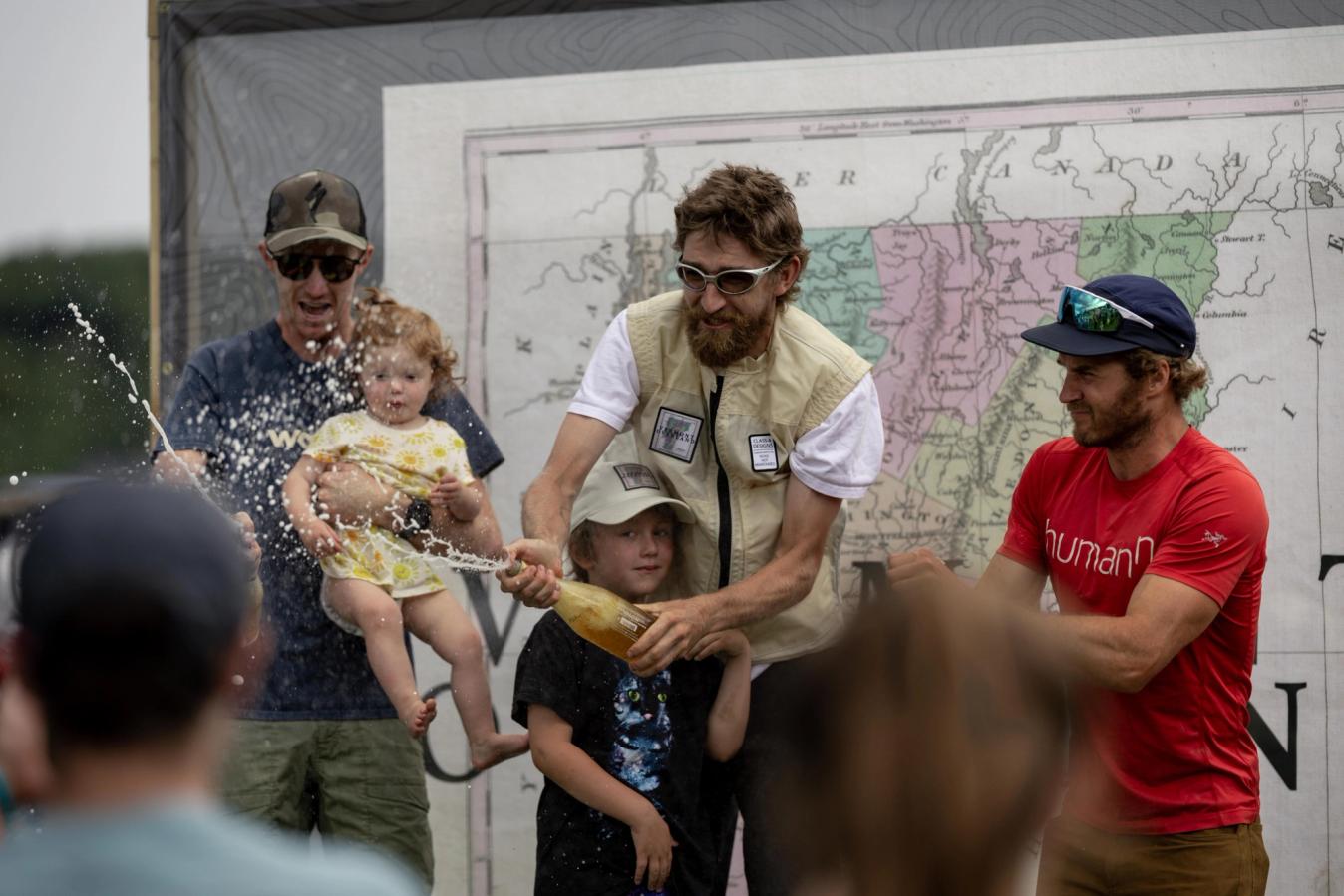
© Tom Dils
While the race might be short it never fails to bring the horsepower, with the local professionals like Kyle Murphy and Ian Boswell taking the top podium places every year
Tech tip: Do not let the pictures of smooth-packed dirt Vermont back roads fool you, the riding at the Vermont Overland is rowdy and requires some added traction. Leave the slick tyres at home and come prepared with a 40mm+ option with some prominent side knobs to navigate the famous Class 4 roads of the race.
Read more: How to choose the right tyre for your gravel bike
UnPAved of the Susquehanna
- Date: October 14
- Location: Lewisburg, Pennsylvania
- Distances: 120 miles (10,000 feet), 90 miles, 50 miles, 30 miles and a limited capacity 200 mile race
- Registration: $130, registration date to be confirmed
- UnPAved of the Susquehanna website
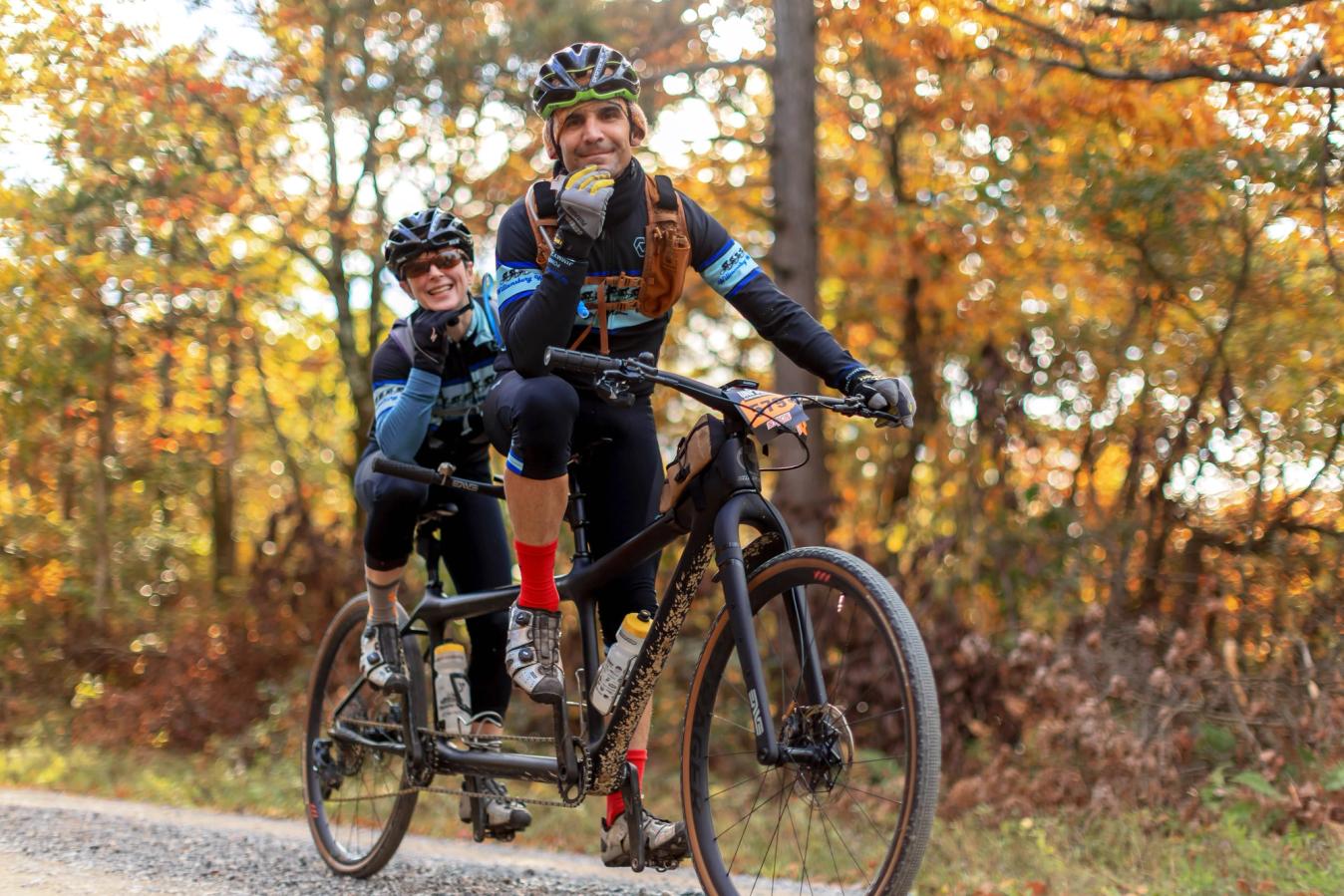
© Abe Landes, Firespire Photography
There is fun for everyone in the autumnal hills of the UnPAved course
If there is one downside to gravel racing, it’s that those hoping for a fast time often breeze by the scenery so fast they don’t even get to enjoy it. One race in the United States has set out to make that almost impossible. Enter UnPAved of the Susquehanna in central Pennsylvania.
The race, which is at the end of the season but smack dab in the middle of the peak fall foliage season of the mid-Atlantic state, has foregone the standard practice of mass start gravel events and instead formulated an enduro-style format of timed segments. This means that over the most challenging terrain, the pace is on. Conversely, between those segments, the day is about enjoying robust aid station offerings, cavernous tunnels of vibrant greens, reds, yellows and orange leaves and countless new friends.
Starting and finishing in the small college town of Lewisburg, the course offers the loosest possible start line experience, with the riders given windows of a couple of hours to roll across the start line to begin their day. The first window is open for the longest route option, the 200-mile Big Lick, while the 120, 90 and 50-mile options follow. Each route goes over the same terrain to start and finish, with the option to shorten one’s distance during the race.
This structure, paired with the segment timing and great aid stations, makes UnPAved a great starter event for someone looking to dip their toe into the gravel world, or a group of friends looking for a more collective event experience.

© Abe Landes, Firespire Photography
While most of the race is in virtual tunnels of foliage, a couple of vistas really steal the show
Tech Tip: UnPAved is a pretty tame gravel race in terms of surface. The climbs are steep but not extreme like those in some of the other races on the list. A classic semi-slick and standard chainrings will work well. What we would recommend is to shake up your nutrition. With the ability to slow down between segments, solid food can easily be enjoyed along the route.
The Spirit World 100
- Date: November tbc
- Location: Patagonia, Arizona
- Distances: 100 (6,500 feet), 80 miles and 50 miles
- Registration: $255, registration date to be confirmed
- The Spirit World 100 website
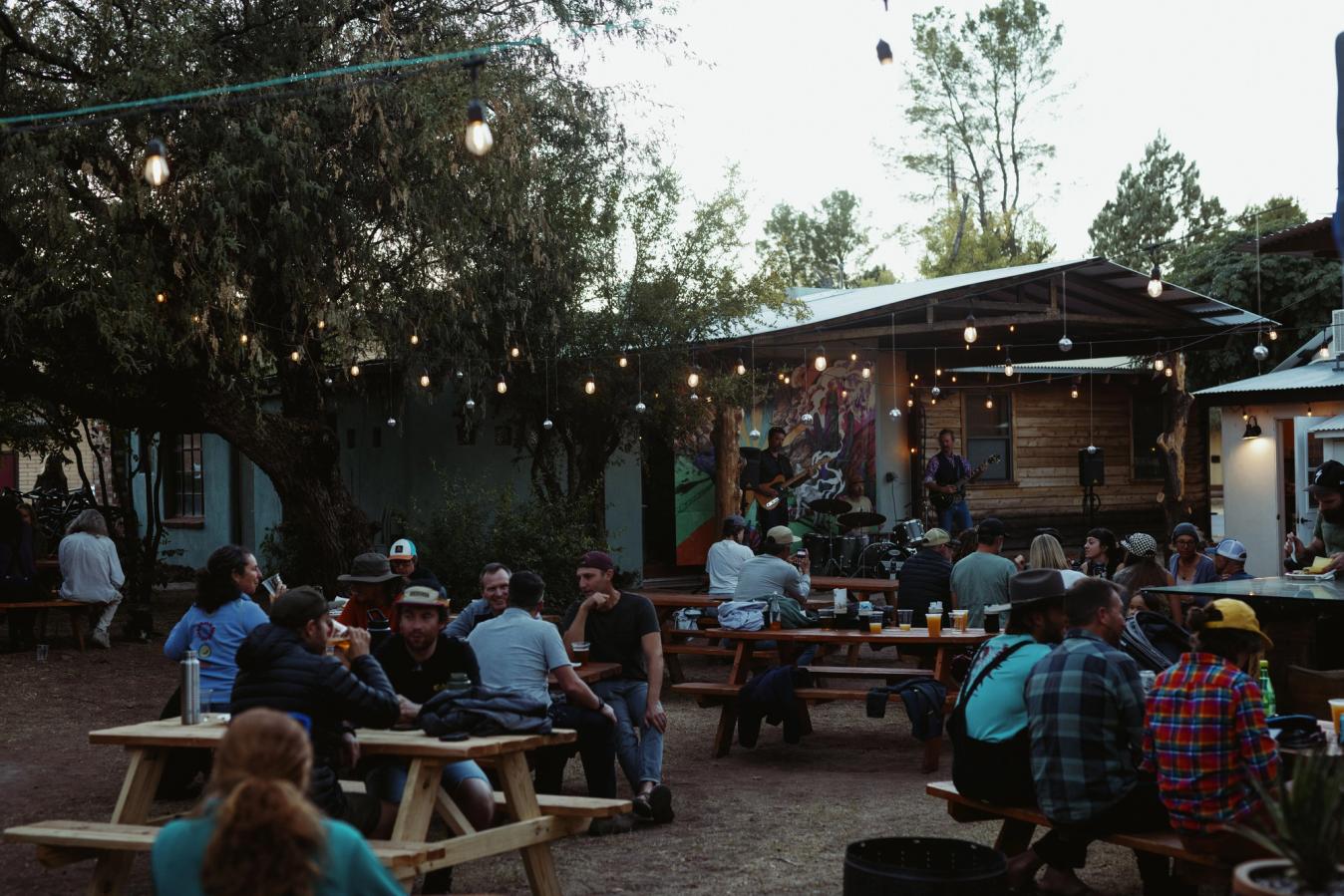
Courtesy of Spirit World 100
The campout feel of the venue is humming all weekend long as the small town of Patagonia is turned over to the racers
Spirit World 100 is a race weekend. Even though it is a one-day race, it is a multi-day event, with an entry fee that encompasses four meals, camping, the race and aid stations. It is truly all-inclusive. Once you park your car in the small Arizona town of Patagonia, your wallet stays in your pocket.
The race itself is a tour of the Arizona borderlands and the high desert of the southern Sonoran deserts. The course is a rolling affair with the 100-mile course being the longest option, with a shorter 80 or 50-mile offering for those there for a lesser challenge. Furthermore, even though the event is in Arizona, don’t expect to see a bunch of cacti. The terrain instead resembles a savanna with big landscapes, sparse trees and broad grasslands, as the race bumps around an altitude of 5,000 feet.
Nevertheless, as you might be able to guess from a race called Spirit World, the focus of the event is a bit more broad than racing. It is about a full experience of ease and adventure for the full family, all while providing the best possible food for each participant. This includes dinner the night before, breakfast the morning of the race, dinner after the event and breakfast the morning after.
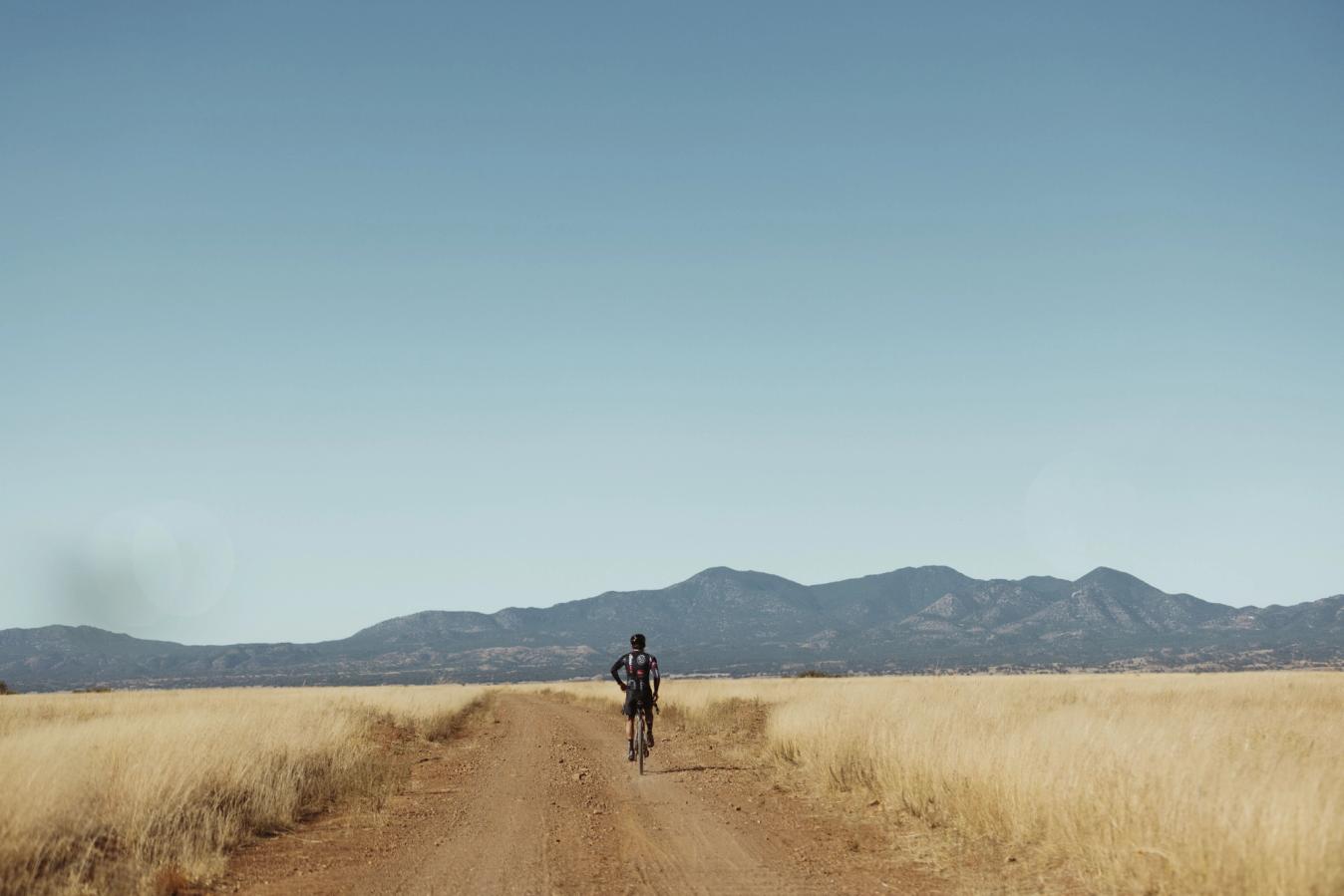
Courtesy of Spirit World 100
The wide open spaces of the Arizona borderlands
The one potential downside of Spirit World is that it is only open to 500 people. Because the event is so involved, the race promoters have kept it an intimate event. To register, you have got to be quick.
Tech tip: At Spirit World, there is no big trick on the tech set-up, it is all about what makes you most comfortable on the relatively tame gravel roads of the Mexican/American borderlands. Our recommendation? Bring a warm camping setup to get a good sleep while enjoying the full weekend of festivities.
To explore more about gravel riding, from bikes and tech to events and top tips, head to our dedicated gravel hub.
